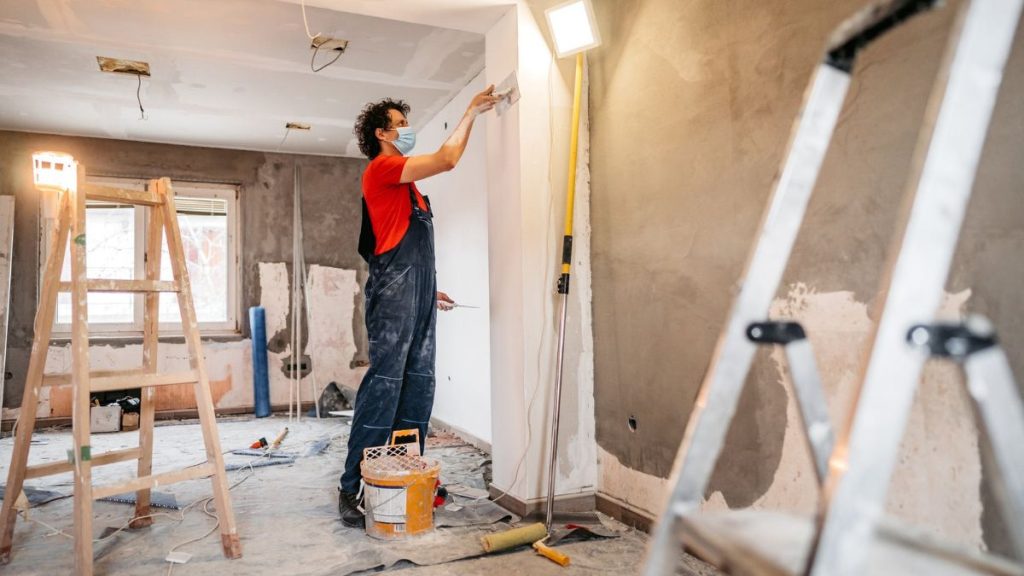The Government of Canada has officially confirmed the $7,500 Home Renovation Tax Credit 2025, a federal initiative designed to help families make essential home modifications for seniors and individuals with disabilities.
Administered by the Canada Revenue Agency (CRA), this refundable tax credit allows eligible households to claim up to CAD $7,500 in renovation expenses — even if they owe no income tax. The program supports families in creating safe, accessible, and private living spaces for aging or disabled relatives, encouraging independent yet connected living arrangements.
Purpose of the Home Renovation Tax Credit

The Home Renovation Tax Credit 2025 is part of the federal government’s broader strategy to:
- Support aging at home by enabling seniors to remain near family.
- Improve accessibility for Canadians with disabilities.
- Relieve financial pressure on middle-class families caring for loved ones.
- Enhance housing affordability by promoting multi-generational living.
The initiative reflects Canada’s commitment to improving social infrastructure while providing tangible financial support to households adapting to changing family needs.
CRA Home Renovation Tax Credit 2025 Overview
| Category | Details |
|---|---|
| Department | Canada Revenue Agency (CRA) |
| Program Name | Home Renovation Tax Credit 2025 |
| Country | Canada |
| Tax Year | 2025 |
| Credit Amount | Up to CAD $7,500 |
| Payment Type | Refundable tax credit (cash refund or tax reduction) |
| Purpose | Renovations for seniors or individuals with disabilities |
| Official Website | www.canada.ca |
Who Can Apply for the $7,500 Home Renovation Tax Credit
To qualify, both the person benefiting from the renovation and the property owner must meet specific conditions set by the CRA.
Eligibility Requirements:
- The individual benefiting must be 65 years or older by the end of the tax year or qualify for the Disability Tax Credit (DTC).
- The property must:
- Be located in Canada;
- Be owned by the eligible individual or a close relative (child, parent, grandchild, or sibling);
- Be a primary residence or intended to be occupied within 12 months of renovation completion.
- The renovation must involve creating a secondary self-contained living space with its own bedroom, bathroom, and kitchen — giving the senior or disabled person privacy and independence.
This credit helps families establish accessible suites, basement apartments, or backyard units designed to meet health and mobility needs.
Eligible vs Non-Eligible Renovation Expenses
Not all home improvements qualify for the credit. The CRA has clearly outlined which costs can be claimed and which cannot.
Eligible Expenses Include:
- Building materials (lumber, drywall, insulation, fixtures)
- Labour costs paid to licensed contractors, electricians, or plumbers
- Professional design or architectural services
- Equipment rentals used for renovation
- Building permits and inspection fees
Non-Eligible Expenses Include:
- Routine maintenance or minor repairs
- Furniture and decorative items
- Household appliances and electronics
- Gardening or landscaping work
- Security systems or home entertainment setups
To ensure compliance, all expenses must directly relate to constructing a secondary living space for the qualifying individual.
Why the Home Renovation Tax Credit Matters
The 2025 Home Renovation Tax Credit plays a key role in addressing Canada’s growing need for accessible housing and affordable caregiving options.
Key Benefits Include:
- Reduced renovation costs: Families can recover up to $7,500 of eligible expenses.
- Improved accessibility: Enables installation of ramps, wider doorways, and mobility-friendly layouts.
- Support for caregivers: Families can care for loved ones at home, reducing reliance on care facilities.
- Increased property value: Accessibility-focused upgrades enhance home resale appeal.
- Multi-generational living: Allows elderly relatives to live independently while staying close to family.
This initiative not only promotes inclusivity but also helps families save thousands on essential home improvements.
How to Apply for the $7,500 Home Renovation Tax Credit
Applying for the Home Renovation Tax Credit requires accurate documentation and compliance with CRA guidelines.
Step-by-Step Process:
Plan and Begin Renovations
- Prepare detailed plans that meet local building codes.
- Hire certified contractors to ensure quality and compliance.
Keep All Documentation
- Save invoices, receipts, payment proofs, and contracts.
- Keep photos and inspection reports as supporting evidence.
Complete Renovations Within the Tax Year
- All eligible expenses must be incurred and paid during 2025.
File Your Tax Return
- Complete Schedule 12 – Home Renovation Tax Credit when filing your 2025 income tax return.
- Report the total eligible expenses on Line 45355 of your return.
Submit Supporting Documents to CRA
- CRA may request verification documents during review.
- You can track your claim’s progress through the CRA My Account portal.
Once approved, the refund will be credited to your account or used to reduce your tax balance.
Tips for a Successful Claim
To avoid delays or rejections, follow these expert tips:
- Use CRA-approved contractors and get all invoices in the claimant’s name.
- Double-check that renovations meet the definition of a secondary living space.
- File your taxes on time to avoid processing delays.
- Keep all receipts and digital copies for at least six years in case of audit.
- If unsure, consult a CRA-authorized tax professional before filing.
These steps ensure your claim is valid and fully compliant with federal tax rules.
Impact on Canadian Families
The Home Renovation Tax Credit is more than a financial incentive — it’s a social policy tool that strengthens families and communities.
With Canada’s senior population growing rapidly, more households are turning to multi-generational housing as an affordable solution. This credit encourages families to adapt their homes to support aging relatives without compromising independence or safety.
By offsetting renovation costs, the program helps maintain dignity, inclusion, and stability for seniors and people with disabilities across the country.
Common Examples of Eligible Projects
- Building an in-law suite or basement apartment with its own entrance.
- Adding a bathroom or kitchenette for an elderly parent.
- Converting a garage into an accessible living space.
- Installing a wheelchair-accessible ramp and widened doorways.
- Creating a separate living unit with private utilities and safety features.
These upgrades not only improve daily life for seniors and disabled individuals but also increase property utility and long-term value.
Important Reminders
- The maximum claim is $7,500 per household per tax year.
- Renovations must be substantial and accessibility-focused, not decorative.
- Claims can only be made once per qualifying renovation project.
- Keep all records — the CRA conducts random audits to verify claims.
For full official details, visit the Government of Canada website and search “Home Renovation Tax Credit 2025.”
Frequently Asked Questions (FAQs)
Q1. Who qualifies for the $7,500 Home Renovation Tax Credit 2025?
Seniors aged 65 or older, or individuals eligible for the Disability Tax Credit (DTC), can qualify — as can their family members who own and renovate the property.
Q2. What renovations are covered under this tax credit?
Only renovations that create a secondary self-contained living unit — including materials, labour, and professional fees — are eligible.
Q3. How do I apply for the credit?
Claim it on your 2025 income tax return using Schedule 12, and report the total on Line 45355. Attach all receipts and supporting documents.
Q4. What expenses are excluded?
Routine maintenance, furniture, appliances, and decorative upgrades are not eligible.
Q5. When will I receive the benefit?
After filing your 2025 return, the CRA will process your claim and issue a refund or tax reduction depending on your eligibility.
















